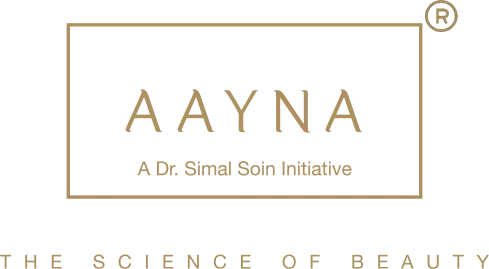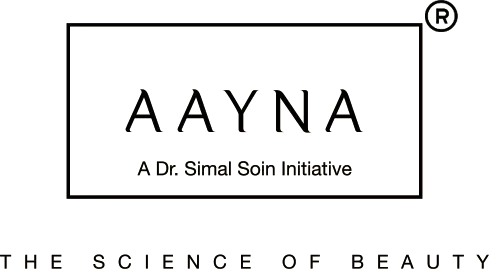In the ever-evolving world of skincare, red light therapy (RLT) has emerged as a captivating trend. This innovative treatment boasts the potential to combat a multitude of skin woes, from the telltale signs of aging like wrinkles, to stubborn acne and even pesky scars. But beneath the red glow lies a fascinating interplay of science and cellular activity. Let’s delve deeper into this intriguing treatment and explore its potential to transform your complexion.
Demystifying Red Light Therapy: How Does it Work?
Imagine harnessing the power of light to rejuvenate your skin. That’s the core principle behind RLT. This treatment involves exposing your skin to low levels of red and near-infrared light wavelengths. These gentle light beams bypass the surface of your skin and penetrate deeper, reaching the mitochondria – the powerhouses of your cells. Here’s where the magic happens:
- Enhanced Cellular Energy Production: The red and near-infrared light interacts with chromophores (light-absorbing molecules) within your cells. This interaction is believed to stimulate the production of adenosine triphosphate (ATP), the primary source of cellular energy. With increased energy production, your skin cells can function more efficiently, promoting overall cellular health and repair.
- Boosting Collagen Synthesis: Collagen, a protein responsible for maintaining skin’s plumpness and elasticity, naturally depletes with age. RLT is thought to trigger the fibroblasts, the collagen-producing cells within your skin. This can lead to increased collagen synthesis, potentially diminishing the appearance of wrinkles and fine lines.
- Combating Inflammation: Inflammation is a root cause of many skin concerns, including acne and rosacea. RLT’s ability to reduce inflammation may explain its potential benefits in calming these conditions. The light exposure is believed to suppress the activity of inflammatory cells, leading to a calmer and more even-toned complexion.
Read more about: AAYNA Miracle Treatment
The Potential Benefits of RLT for a Radiant You:
While research on RLT is ongoing, current studies suggest a range of promising benefits for various skin conditions:

- Wrinkle Reduction: As mentioned earlier, RLT’s ability to stimulate collagen production may hold the key to smoother, younger-looking skin. Studies have shown a reduction in the appearance of wrinkles and fine lines, particularly when used consistently over time.
- Scar Healing: Scars can be a constant reminder of past injuries. RLT’s potential to promote tissue repair and regeneration might offer a ray of hope. Studies suggest it can improve the appearance of scars, making them less noticeable and smoother.
- Acne Relief: While blue light therapy is more commonly used for acne due to its ability to target bacteria, RLT might also play a role in managing breakouts. Its anti-inflammatory properties can potentially calm redness and swelling associated with acne, promoting a clearer complexion.
- Overall Skin Rejuvenation: The multifaceted benefits of RLT, including its ability to boost collagen, reduce inflammation, and promote healing, can contribute to overall skin health. It may lead to a smoother, more even-toned, and radiant complexion.
Important Considerations: Setting Realistic Expectations with RLT
While research paints a promising picture, it’s crucial to approach RLT with realistic expectations. Here are some key points to consider:
- Individual Results May Vary: The effectiveness of RLT can depend on various factors, including the specific skin condition being treated, the device used, and the treatment duration. Consistency is key, and noticeable results may take several weeks or even months to appear.
- Not a Standalone Solution: RLT is best viewed as a complement to your existing skincare routine. It can work synergistically with other treatments like topical creams or microneedling to enhance their effects.
- Research is Ongoing: While studies are encouraging, more research is required to solidify the long-term efficacy of RLT for all skin concerns.
Safety First: Precautions for Embracing Red Light Therapy
RLT is generally considered safe for most skin types. However, certain precautions are essential:
- Eye Protection is Paramount: The light used in RLT can potentially damage your eyes. Always wear protective eyewear provided with the device during treatment.
- Consult Your Dermatologist: If you have any underlying skin conditions, such as eczema or rosacea, or are taking medications that increase sun sensitivity, consult your dermatologist before using RLT.
- Beware of Heat and Overuse: RLT devices shouldn’t generate heat. Discontinue use if your skin feels warm or uncomfortable. Additionally, follow the recommended treatment times to avoid potential side effects.
The Final Verdict: Is Red Light Therapy Right for You?
Red light therapy holds promise for improving various skin concerns. However, it’s crucial to manage expectations and approach it as a potential tool in your skincare routine, not a guaranteed fix. Talk to your dermatologist to see if RLT is right for you and explore the best treatment options for your specific needs.
FAQs
Q. Will Red Light Therapy Work for Everyone?
A. While research is promising, individual results may vary. Factors like the specific skin condition, device used, and treatment duration can influence effectiveness. It’s best to approach RLT as a potential tool to complement your existing skincare routine, not a guaranteed fix.
Q. What are the Alternatives to Red Light Therapy?
A. There are numerous options for addressing skin concerns. Consult your dermatologist to explore the best course of action for you. Some alternatives might include topical creams, micro needling, or chemical peels.
Q. Does Red Light Therapy Have Any Side Effects?
A. RLT is generally well-tolerated, but some mild side effects might occur, especially with prolonged use or incorrect settings. These can include:
- Temporary redness or flushing: This usually subsides shortly after treatment.
- Headaches: While uncommon, some individuals experience mild headaches after RLT sessions.
- Skin sensitivity: If you have sensitive skin, discuss the therapy with your dermatologist to determine suitability.
Q. Can Red Light Therapy Interact with Medications?
A. Certain medications can increase sun sensitivity. If you’re taking any medications, consult your doctor before undergoing RLT to ensure there are no interactions.
Q. Can I Combine Red Light Therapy with Other Skincare Treatments?
A. RLT can potentially be combined with other skincare treatments, but it’s crucial to consult your dermatologist first. Certain combinations might not be suitable or could even counteract each other’s effects.
AAYNA SDA
C3/1, Safdarjung Development Area, New Delhi- 110016
+91 704 229 7304 | +91 987 113 8222
AAYNA Khan Market
47, Middle Lane, Khan Market, Rabindra Nagar, Khan Market, New Delhi – 110003
+91 987 039 6667
AAYNA Gurgaon
Ground Floor, B-89, Sushant Lok Phase I, Sector 43, Gurugram, Haryana – 122002
+91 981 092 7946
AAYNA Ludhiana
7-E, 1st Floor, Sarabha Nagar, Ludhiana – 141001, Punjab
+91 857 500 6060



